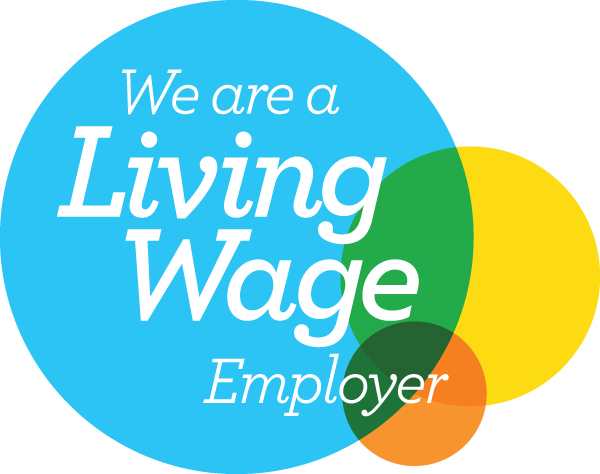Today’s Industrial Strategy answers some questions but prompts many more
Michael Dowsett, Associate Director23/06/2025
Gone are the days when the term ‘Industrial Strategy’ was widely accepted as a euphemism for the costly and futile process whereby public funds were used to prop up failing firms. Nor, in a world where economic interconnectivity is increasingly politicised, are Governments afforded the luxury of being ambivalent about the global supply chains we rely on. And given the political tumult of the last ten years or so, nobody can deny the electoral importance of addressing the deindustrialisation that has occurred in many ‘left behind’ communities over recent decades.
This is the context for the publication today of the Government’s Modern Industrial Strategy – which follows hot on the heels of last week’s 10 Year Infrastructure Strategy. The key winners are eight sectors (the ‘IS-8’) which the Government sees as having the highest potential in terms of boosting the UK’s productivity, strengthening economic security, and supporting the net zero transition. Each will benefit from a ten-year sector plan to support future growth. There is also a nod to future support for the ‘foundational industries’ that support the IS-8, including the politically sensitive area of steel.
Across these eight sectors, the Government is pledging to tackle stubborn barriers that are holding back growth, ranging from high industrial electricity prices (the subject the Government is choosing to focus on in its comms around the Strategy launch), skills shortages, and access to finance.
All well and good, but three key questions hang over the launch of today’s Strategy:
Is it coherent, both in itself and with the Government’s wider agenda?
Many on the right will argue that a Strategy which simultaneously says it will cut industrial electricity costs (the UK’s being the highest in the G7) and bids to make us a ‘clean energy superpower’ is doomed from the start.
Any plan to turbocharge the UK’s AI adoption without clarity on how public consent will be maintained in the midst of potentially vast job losses, risks storing up major problems in a dash for a ‘silver bullet’ solution to our anemic growth.
And what will the commitment to “rebalancing to regulate for growth” in the financial services sector come to when many voters are still scarred by the 2008 crash?
Maybe the Government will decide that it is worth the political hit on all these and other issues (e.g. privacy concerns arising from using UK data as an “economic asset”) to deliver the growth that is central to Labour’s re-election.
Yet, as flagship policies over the last year as varied as planning reform, the employers’ NI rise, plans to strengthen workers’ rights, and the constraints imposed in the recent Spending Review show, the Government can’t decide whether its core purpose is to balance the books, present a socially-democratic face, or be restless agitators for growth. If this Strategy is to deliver what the Government needs it to, it will require a clear focus on the latter, particularly with the prospect of further tax rises being telegraphed in the autumn.
What about the ‘losers’?
Figures from the ONS show that in 2022 the real estate and wholesale and retail sectors respectively were the first and second biggest contributors to the UK economy in terms of GVA added. Between them, they accounted for around one in seven jobs in the workforce as of September 2023.
Yet neither of them are included in the IS-8 sectors that are at the heart of this new Strategy. Maybe that’s part of the point, i.e. that Government needs to intervene less in sectors that are already doing well, though that would surely ring hollow to anybody who has recently walked down a previously thriving but now deserted town-centre high street.
The inclusion of financial services in the IS-8 also shows the Government is prepared to prioritise service-based sectors within the Industrial Strategy, despite still widespread acceptance that, in the case of FS, the UK was severely over-reliant on it as recently as the 2000s, with catastrophic consequences.
We could easily see ‘large yet overlooked’ sectors squeezed between the negative parts of the Government’s agenda on one hand (e.g. tax rises, enhanced workers’ rights) whilst being deprioritised for funding that could ameliorate their situation, but which will now be funnelled towards IS-8 sectors. This represents a big gamble if the Government’s agenda hits sectors employing millions of UK workers without quickly generating corresponding growth in the IS-8.
Can it survive volatile political currents?
The Government of the day has now published four industrial strategies in the last eight years. Beneath the different language used in the top line (2017 talked of ‘grand challenges’; the 2021 Plan for Growth of ‘building back better’; and 2023’s Plan for Growth and Prosperity pledging to ‘fix the foundations’) there are many similarities. All heralded and committed to doubling down on the UK’s strengths in areas like life sciences and clean energy, whilst fixing stubborn barriers to growth around ageing infrastructure, inadequate skills and poor regulation.
Research by Make UK shows that one of the key reasons for manufacturers’ supporting the Government having an industrial strategy is to provide a long-term vision. Yet with the UK averaging a new Prime Minister every 18 months since 2016, since industrial strategies came back into fashion the political cycle has arguably undermined efforts to provide the policy certainty business craves.
Despite Labour’s vast parliamentary majority, the Government’s rapid descent into deep unpopularity, and the lack of clarity over what a Reform government would mean in practice, could lead to history repeating itself. Labour’s retention of the Conservative-era ‘Industrial Strategy’ branding could be ominous.
To get a second term, Labour will need the ambitions in this Strategy to come to fruition, and felt by ‘ordinary people’, quickly. Yet if businesses feel the Government is already on the skids, and more tax rises could soon be coming, that will lead to them hedging their bets on the long-term rather than taking risks for growth. This amounts to an unenviable position for the PM, and for the millions of voters who are fast losing hope in the ability of the British economy to deliver the goods, and who struggle to see how plans such as the one published today will meaningfully improve their day-to-day lives.
We’ve cultivated an environment that harbours independence. Whether they are early birds who go to yoga and then smash their news updates before 8.30am, or they simply hate travelling on the tube in rush hour, we trust and respect our team’s skills and conscientiousness. As long as core responsibilities are covered, our team is free to work flexibly.
We’re proud to be a living wage employer. We believe that no one should have to choose between financial stability and doing a job they love, so we pay a wage that allows our team to save for a rainy day and guarantees a good quality of life.
Sign up to receive the Atticus Agenda
Sign Up Here



